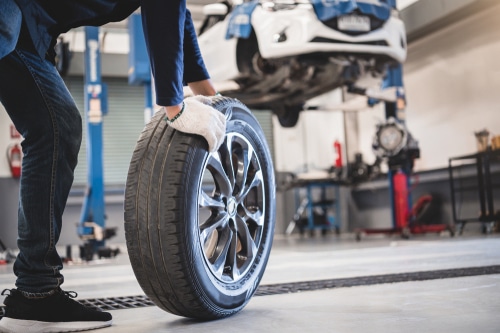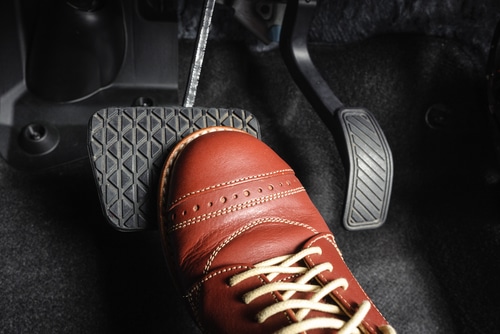Home » Blog » Car » Car Lifestyle » Your Guide to Buying Tyres for Your Car
Categories
Tags
animal welfare
breed profile
buying a car
buying a pet
Car
car accessories
car care
car features
car insurance
Car safety
car sales
car service
cat
cat behaviour
cat body language
Cat Breeds
cat food
cat insurance
comprehensive car insurance
Dog
Dog Behaviour
dog body language
Dog Breeds
dog food
Dog Insurance
dog training
eco friendly cars
Kitten
New Car
pet accessories
pet activities
Pet Adoption
pet breeders
pet days of the year
pet fun stuff
Pet Health
pet insurance
pet parenting
Pet Safety
pet services
Puppy
rescue pets
road safety
road trip
safe driving
Recent Blog:
Facebook Posts
1 day ago
Growing old sometimes means we can’t take care of pets anymore. Find out some advice on what to do when this happens:![]()
![]() Senior Pet Parents – Contingency Plans for Your Pet – bit.ly/44bzwkS
... See MoreSee Less
Senior Pet Parents – Contingency Plans for Your Pet – bit.ly/44bzwkS
... See MoreSee Less
Senior Pet Parents' Contingency Plans for Pets
www.pd.com.au
Sometimes senior pet parents need more downtime. For older pet owners, this can be tricky to navigate if their dog or cat is full of beans and wants to3 days ago
Before you rev up the engine, let’s run through a checklist of things to do before starting your car. Not only do these steps ensure your safety (and that of others around you), but they also help in maintaining your vehicle's longevity.![]()
![]() Driving Tips: Your Checklist Before Starting Your Car -
... See MoreSee Less
Driving Tips: Your Checklist Before Starting Your Car -
... See MoreSee Less
Driving Tips: Your Checklist Before Starting Your Car
www.pd.com.au
Heading out for a drive? Hold up a second! Whether you're dashing off to work, running errands, or embarking on a road trip adventure, there are a few1 week ago
Are intestinal worms setting up camp in your dog’s gut without paying rent? Here’s how to spot the main culprits and get rid of them too:![]()
![]() Preventing, Identifying and Treating Intestinal Worms in Dogs - bit.ly/43YjCKu
... See MoreSee Less
Preventing, Identifying and Treating Intestinal Worms in Dogs - bit.ly/43YjCKu
... See MoreSee Less
Preventing, Identifying and Treating Intestinal Worms in Dogs
www.pd.com.au
Intestinal worms, such as roundworms in dogs are one of the least glamorous topics on the planet. These intestinal parasites that basically use our dogsWhen the time comes to buy tyres for your car, it’s normally a grudge purchase. Let’s face it, they’re not a fun thing to spend money on. We’d much rather be shopping for holidays, the latest tech gadgets or clothes. But unlike jeans or an Airbnb, getting it wrong is more than just an inconvenience. It’s dangerous.
How do you ensure you’re buying tyres that are suitable for your car? And how do you make sure you don’t get ripped off?
When should I be buying new tyres?
You don’t want to buy tyres for the sake of it. They’re pricey, and you want to get as much use out of your current ones as you can. While staying safe and practical, of course. So how do you know when it’s really time for a new set?
The best way to know whether or not it’s time to buy new tyres for your vehicle is to take them to a local tyre specialist for inspection. But you can check them yourself too.
When the tyre tread is an issue
Legally, the tread needs to be a least 1.6mm deep…. or when it’s flush with your tread wear indicators. You’ll find these in the grooves between the tread on your tyres.
Anything below that is considered unroadworthy and driving on them is illegal. Not to mention risking the safety of you, your passengers and everyone else on the roads. Also, if you did have an accident with tyres considered unroadworthy, your car insurance provider could deny your claim.
Although the legal tread depth is 1.6mm, it’s often recommended that you buy new tyres once they hit 3mm.
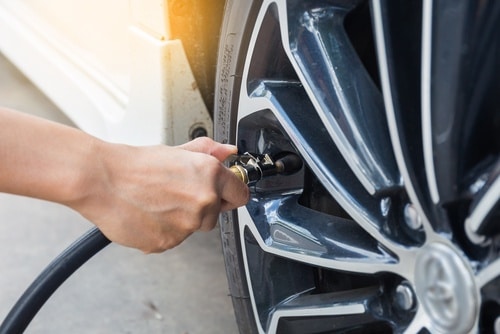
When there are other tyre issues
Tyres should be regularly checked for sidewall damage and signs of irregular wear to make sure they’re safe to drive on. Keep an eye on your tyres for uneven wear (where one or more tyres has tread that’s more worn than the others) as well as damage such as cracks, bubbles or punctures.
You may also need to change your tyre when you find yourself having to inflate it more regularly than the others. And you definitely need to change it if you’re continuing to get the tyre pressure warning light despite regular re-inflation.
Why? Read about the importance of car tyre pressure and get to know your car dashboard symbols and meanings.
Also remember that tyres should be no more than 10 years old – but when they reach 5 years it’s best to get them checked yearly, and at every service.
Which tyres should I buy? Our top tips
Matching the right tyres to your driving style, conditions and car type can improve your car’s efficiency, safety and handling. It’s like pairing the right shoes with the right activity. You wouldn’t buy steel-capped boots for the beach, in the same way you wouldn’t buy heels for hiking.
The wrong tyres can make your ride rough, increase noise inside the car (headaches while driving aren’t fun – your car sound should be a purr) and hinder your car’s on-road performance. Plus, the wrong tyre can wear faster, meaning you’ll be back here researching tyres again soon if you make the wrong decision. So, where do you start?
1. Shop around, ask for advice
You’ll find there are many options available at varying prices. Rather than finding the cheapest tyre that matches your specs, we recommend talking to a few tyre resellers about any concerns you have, and ask for recommendations.
Don’t take the word of just one salesperson – shop around.
But first, do your research on the types of tyres and what will best suit your car and the way your drive.

Side note: If you’re taking your driving licence test for the first time or attempting it again, it’s completely normal to feel anxious about doing a good job. Read this ‘How to Pass an Australian Driving Test: Best Practical Tips‘ article to learn more.
2. Match your make
The most important thing when buying new tyres for your car is to buy ones that are suitable for your car make and model. An independent tyre specialist will be able to recommend ones, as should your trusted car mechanic. Don’t have one yet? Read our tips on how to choose a mechanic.
If you want to do your own research, the best place to start is the owner’s manual.
There you will find the size, speed rating and load rating you need for whatever new tyres you’re buying. Aim to buy tyres that meet or exceed those recommended specs. You’ll also find the ideal tyre pressure for your wheels.
Then, you’ll need to consider your driving habits.
3. Consider your individuality
Consider your unique needs before you ask questions of Dr Google or your local Car Guru.
For example, are you a frequent highway driver or more of an urban driver? Perhaps you’re concerned about road noise, or wet weather grip. Maybe you’d like something more durable or need a more rugged tyre with a higher load rating because you want to take your SUV off-road. Are you often towing a trailer or do your tyres have to endure lots of caravan holidays? So many considerations but all are worthwhile of noting.
According to CarsGuide, it’s really not possible to conclude anything about a new tyres’ performance, comfort, safety or durability. This is because you have no way of being able to deconstruct a tyre or analyse what it’s made of. However, a tyre professional can help you navigate the landscape.
Want to dig a little deeper yourself on this?
4. Know the types of tyres
Once you have a good idea of what your car and its driving needs are, you can choose tyres to suit those needs. The main options are:
- Performance tyres – Performance tyres are for keen drivers who value good handling over cost. They tend to give a stiffer ride quality, but offer great grip and braking performance.
- Touring tyres – Touring tyres are the “all rounders” of the car world. They’re designed to be relatively quiet and comfortable, and can handle driving in wet road conditions too.
- Fuel-saving or eco tyres – Fuel-saving tyres reduce resistance and are designed to help you lower costs. Because the car needs less power to turn these tyres, they help reduce fuel consumption and tend to last longer than other tyres too. Read more tips on improving fuel efficiency here.
Now you have that info under your (fan)belt, it’s time to get out and compare the cost of new tyres that fit the bill.
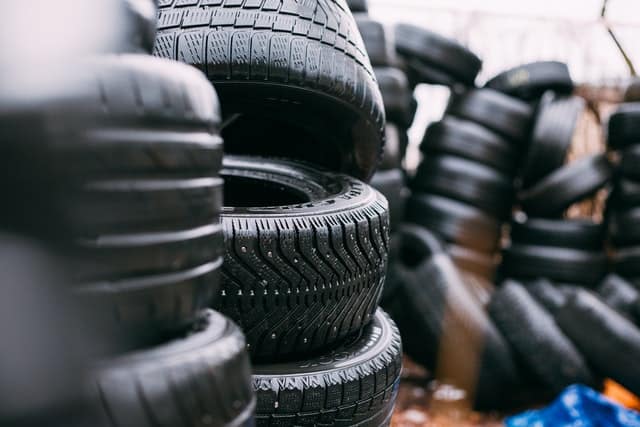
5. Balance cost with effectiveness
Cheaper tyres have the potential to be, well, nasty. So, the costs should be weighed against reputation as well as driving needs to find the buy the best tyre for you.
Other things to consider are:
- Rolling resistance: The amount of energy required to move the vehicle along the road. Theoretically the lower the resistance, the better the fuel economy but the difference is marginal at best (and hard to measure accurately). Heavy duty, aggressive treads have more rolling resistance.
- Grip and durability: Softer tyres wear quicker but also grip better to the road. It’s best to weigh your options here and find a mid-point that works for you.
- Tread patterns and type: Tread patterns come in a variety of options tailored to your circumstances. You’ll find directional tread that fit on one side of the car and only rolls in one direction, and asymmetric tyres that have tread that rolls in either direction. Directional tread usually has the word ‘outside’ printed on the outer facing part of the tyre and you’ll need to buy a matching tyre to replace it if necessary.
Two key considerations: Price and brand
Once you’ve decided on the type of tyre you need, there are two major considerations left: brand and price. You’ll usually have the choice between a number of brands of tyres when you’re buying. Largely, these will dictate the price.
We’re not saying you have to buy diamond-encrusted tyres for thousands. But tyres often are a ‘get what you pay for’ type of purchase.
How tyres perform are arguably one of the most important elements of car safety, working alongside your internal car safety features to keep you accident-free. Without proper tyres, you wouldn’t be able to accelerate, brake, or even steer safely. And with constantly changing weather events, being able to drive well on different surfaces in varying weather is crucial.
So while you might be tempted to buy tyres cheap, keep in mind that a reliable set of tyres will offer you peace of mind.
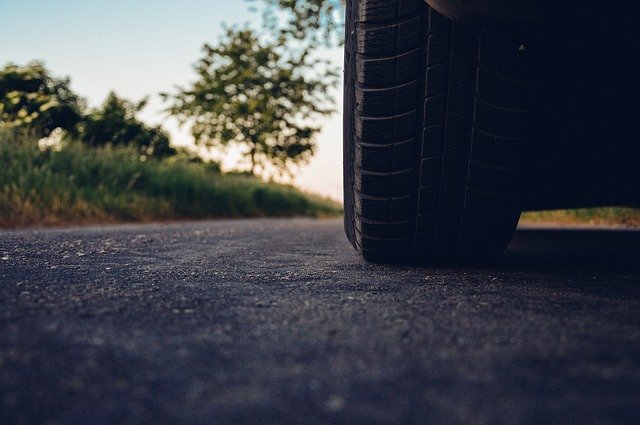
Do I have to buy all four tyres?
If you’re buying tyres, especially when it’s after a puncture, you might wonder if you need to replace all four. Ideally, the answer is yes. You want them to have even contact on the road surface and to wear evenly over time. But it isn’t always possible – especially if one tyre needs to be replaced and the others are still in great condition.
When you buy tyres, remember you want them to be as identical as possible. Having front ones vastly different from the rear, for example, could make your car difficult to control. If you absolutely have to replace only one or two though, choose ones that are as close as possible to the tyres already on the car.
Also, it’s said that new ones should always go on the back axle.
As for the old ones? Here’s some fun you can have with them.
Take care of them so you don’t buy tyres more often
You’ve done it! You’ve chosen the best tyre for your car. And maybe you’re worried that you’ve spent a bit extra to get a quality tyre, so you want to ensure you prolong its life for as long as possible.
The best way to get your money’s worth is to ensure you look after them – which means regular pressure checks, treadwear checks and visual checks (for debris, uneven wear, bubbles, cuts or cracks).
If you’re unsure about what you’re looking for, talk to your car’s servicer and ask them to rotate and check them every service. Also remember that if you’ve hit a pothole or clipped a steep gutter while driving, you might want to get them checked for damage. Ask about a tyre balance and alignment while you’re at it.
All this will help ensure your car tyres last as long as possible.
Insurance to protect those wheels
With all the time and money you spend on your wheels, you’ll want to make sure you’re financially protected against on and off-road mishaps. We suggest checking out comprehensive car insurance, which offers you peace of mind should your car be damaged or written off in an accident, or if you become a victim of theft.
Why not get a quick quote and see what you can save?
Share On:

